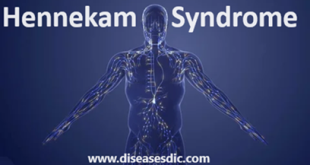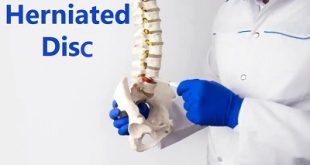Description
Hepatomegaly is the medical term of enlarged liver, which means an increase in size of the liver. “Hepatic” refers to the liver and “megaly” refers to an increase in size. The liver is largest organ of the human body and situated in the upper right quadrant of the abdomen. It weighs a little less in women than men. The weight is 1200 to 1400 g in the adult woman and 1400 to 1500 g in the adult man. It is vital organ in the human body. It is responsible for the digestion of fats (broken down by bile secreted by liver cells), storage of glucose in the form of glycogen and metabolism of the pharmaceutical drugs that we consume.
The factors that affect the size of the liver are age, gender, and body weight and body shape. A liver that is 3 centimeters larger or smaller is still considered normal. The normal liver can sometimes be felt under the right rib cage and is normally soft and smooth with no irregularities.
Diseases that cause the liver to get enlarged have to be treated immediately since they interfere with the liver’s functionality.
Types of Hepatomegaly
Hepatomegaly is broadly classified into two types depending on the texture of the liver surface-
- Smooth Hepatomegaly: In this condition, the liver surface is more or less smooth. Abnormal pulsation of the liver occurs in this condition. This kind of Hepatomegaly is observed in- Chronic heart failure, Hepatitis, early cirrhosis and tricuspid incompetence.
- Craggy Hepatomegaly: This form of Hepatomegaly is characterized by a rough texture of the liver surface due to the formation of nodules and tumours. This kind of Hepatomegaly is common in patients suffering from Primary Hepatoma or Secondary Tumours.
Hepatomegaly Causes
Your liver might be enlarged because of one of these things:
Inflammation or fatty liver. This could be from:
- Obesity
- An infection (such as hepatitis B or hepatitis C)
- Some medications or alcohol
- Toxins
- Autoimmune disease (when your body’s immune system attacks healthy tissue)
- Metabolic syndrome (a group of risk factors for heart disease that includes high blood pressure, blood sugar, and cholesterol levels; and belly fat)
- Genetic disorders that cause fat, protein, or other substances to build up
Unusual growths. These may be due to:
- Cysts
- Tumors that start in or spread to the liver
A problem with blood flow. This may be due to conditions such as:
- Congestive heart failure, a condition in which your heart doesn’t pump blood the way it should
- Hepatic vein thrombosis, a blockage of veins in your liver
- Veno-occlusive disease, a blockage in the small veins in your liver
Hepatomegaly Risk factors
You’re more likely to develop an enlarged liver if you have a liver disease. Factors that can increase your risk of liver problems include:
- Excessive alcohol use. Drinking large amounts of alcohol can be damaging to your liver.
- Large doses of medicines, vitamins or supplements. Taking larger than recommended doses of vitamins, supplements, or over-the-counter (OTC) or prescription medicines can increase your risk of liver damage.
- Acetaminophen overdose is the most common cause of acute liver failure in the United States. Besides being the ingredient in OTC pain relievers such as Tylenol, it’s in more than 600 medications, both OTC and prescription.
- Know what’s in the medications you take. Read labels. Look for “acetaminophen,” “acetam” or “APAP.” Check with your doctor if you’re not sure what’s too much.
- Herbal supplements. Certain supplements, including black cohosh, ma huang and valerian, can increase your risk of liver damage.
- Infectious diseases, viral, bacterial or parasitic, can increase your risk of liver damage.
- Hepatitis viruses. Hepatitis A, B and C can cause liver damage.
- Poor eating habits. Being overweight increases your risk of liver disease, as does eating unhealthy foods, such as those with excess fat or sugar.
What are the signs and symptoms of hepatomegaly?
An enlarged liver on its own may not have any symptoms. But if a medical condition is causing your enlarged liver, you may experience serious symptoms such as:
- Jaundice, or yellowing of the skin and eyes
- Muscle aches
- Fatigue
- Itching
- Nausea
- Vomiting
- Abdominal pain or mass
- Poor appetite
- Swelling of the feet and legs
- Easy bruising
- Weight loss
- Increasing abdominal size
Any of these symptoms require evaluation by your doctor.
- Severe abdominal pain
- Fever and jaundice
- Bloody or coffee ground vomit
- Shortness of breath
- Black, tarry stools or bright red blood in stools
These symptoms are considered medical emergencies.
What are the potential complications of hepatomegaly?
Because enlarged liver can be due to serious diseases, failure to seek treatment can result in serious complications and permanent damage. Once the underlying cause is diagnosed, it is important for you to follow the treatment plan that you and your health care professional design specifically for you to reduce the risk of potential complications including:
- Cirrhosis (scarring of the liver that causes severe dysfunction)
- Hepatic encephalopathy (brain disorder caused by liver disease)
- Hepatocellular carcinoma (Liver cancer)
- Liver failure
- Portal hypertension (increased blood pressure in the veins around the liver, stomach and esophagus)
- Spread of cancer
- Spread of infection
Diagnosis of hepatomegaly
To diagnose the condition, the doctor will perform a physical examination to feel your abdomen. Physical examination can typically identify an enlarged liver. However, the doctor will recommend the following tests to confirm the diagnosis of an enlarged liver:
- Blood Tests: A sample of the blood is collected to determine the levels of the liver enzymes and evaluate the liver function.
- Imaging Tests: The doctor will recommend imaging tests, such as an ultrasound scan, computerized tomography (CT) scan, magnetic resonance imaging (MRI) scan to create images of the liver. These tests help to evaluate the defects and abnormalities in the liver.
- Magnetic Resonance Elastography: It is a non-invasive procedure that is done in combination with MRI imaging. This test creates a visual map known as elastogram, which enables to determine the hardening of the liver tissues.
- Liver Biopsy: During this procedure, the doctor will isolate a sample of core liver tissue and send for laboratory examination. It helps to identify if tumor cells or any other conditions are leading to the enlargement of the liver.
Treatment of hepatomegaly
Treatment for hepatomegaly involves treating the underlying cause. The sections below will outline some potential causes and their associated treatment options in more detail.
Hepatitis
The treatment for hepatitis depends on the type of hepatitis a person has. The different types and their associated treatments include:
- Hepatitis A: There is no specific treatment for hepatitis A. Most people will recover fully within several weeks or months.
- Hepatitis B: There is no specific treatment for acute hepatitis B. Treatment for chronic hepatitis B involves antiviral medications to reduce liver damage and increase long-term survival.
- Hepatitis C: Chronic hepatitis C infections require treatment with drugs called direct-acting antivirals. Treatment typically takes 12–24 weeks, depending on the extent of the liver damage.
- Hepatitis D: People with hepatitis D require treatment with pegylated interferon-alpha. This drug helps slow the progression of the condition. Those with end stage liver disease may require a liver transplant.
ALD
The treatment for ALD will involve treating the alcohol use disorder itself. This may include one or more of the following:
- Undergoing a supervised medical detox
- Trying behavioral therapies, such as cognitive behavioral therapy or motivational enhancement therapy
- Trying family therapy
- Trying group therapy
- Treating any co-occurring or comorbid mental health conditions
NAFLD
The treatment for NAFLD will depend partly on the underlying cause. Some potential treatment options include:
- Making dietary changes, including reducing the intake of cholesterol and fats
- Controlling blood sugar levels
- Managing underlying health conditions, such as increased insulin levels and type 2 diabetes
Cancer
The treatment for liver cancer will partly depend on whether the cancer is primary or secondary. Other factors to consider include the size and stage of the cancer. Some potential treatment options include:
- Chemotherapy
- Radiation therapy
- Immunotherapy
- Surgery to remove the tumor
- Liver transplant
Heart failure
Although there is currently no cure for heart failure, there are treatments available that can help manage the condition and prevent further complications. Some examples include:
Making lifestyle changes, such as:
- Quitting smoking
- Avoiding alcohol
- Avoiding or limiting caffeine
- Managing stress
- Losing weight, if necessary
- Being physically active
- Eating a healthful diet
- Taking medications, such as:
- Angiotensin-converting enzyme inhibitors
- Angiotensin 2 receptor blockers
- Beta-blockers
- Diuretics
- Undergoing surgery to correct irregularities or blocked arteries
How do you prevent hepatomegaly?
Hepatomegaly can be prevented by:
- Stopping intake of alcohol.
- Keeping blood sugar under control.
- Preventing viral infections hepatitis A and B by vaccination.
- Practicing safe sex.
- Eating healthy. Avoid white flour, sugar, and white rice. Include whole wheat flour, brown rice, and multigrain flour in the diet. Also include plenty of vegetables [cooked and raw], and proteins from eggs, lean meat, fish, nuts, legumes, seeds, greek yogurt in the daily diet.
- Including healthy fats such as extra virgin olive oil for cooking and salad dressings. Also eat a low fat diet. Avoid saturated fats /trans fats.
- Keeping weight under check. Avoid drastic weight fluctuations.
- Exercising regularly.
- Avoiding contact with toxic chemicals.
- Choosing herbal medicines and dietary supplements carefully.
 Diseases Treatments Dictionary This is complete solution to read all diseases treatments Which covers Prevention, Causes, Symptoms, Medical Terms, Drugs, Prescription, Natural Remedies with cures and Treatments. Most of the common diseases were listed in names, split with categories.
Diseases Treatments Dictionary This is complete solution to read all diseases treatments Which covers Prevention, Causes, Symptoms, Medical Terms, Drugs, Prescription, Natural Remedies with cures and Treatments. Most of the common diseases were listed in names, split with categories.








I want to know the treatment for acute hepatitis B became I’m going through the condition
Kindly get your information from here
https://diseasesdic.com/hepatitis-b-causes-complications-and-diagnosis/
l want to know the treatment for enlarged liver